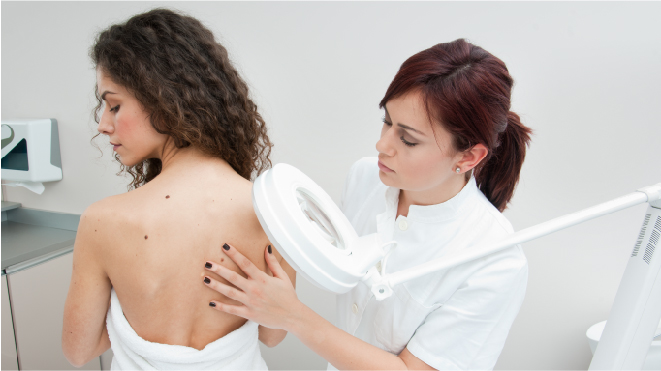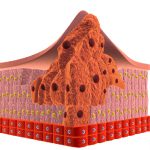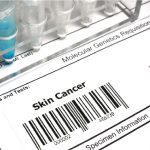Skin cancer can develop in any part of the body, but often, it is develops on skin that is more exposed to the UV radiation. Skin cancer can develop in people of all skin tones. Though chemotherapy, radiation therapy and surgical procedures are the most common treatment options to cure skin cancer, the following procedures are also used as a part of the treatment:
Photodynamic therapy (PDT):
This treatment uses a particular type of light to cure skin cancer. It is often given along with other drugs, which are inactive when until exposure to the laser light. These drugs are given intravenously or places on the skin, and are accumulated more in cancer cells than the normal ones. The major disadvantage of this treatment is the damage it causes to the healthy tissues.
Side effects:
Photodynamic therapy has very less complicated or minor side effects on the patient. The following are the possible side effects that the patients could experience post treatment:
- Burning sensation of the treated area
- Redness of skin
- Skin discolouration
- Cold-sore activation
- Blisters and scars
- Swelling
- Allergic reactions
- Sensitivity to sunlight
- Anesthetic problems
- Pain
- Prone to infections
- Cosmetic disfigurement
Immunotherapy:
Immunotherapy aims in making the patient’s immune system stronger by using artificial substances to restore the body’s defense against cancer. This procedure is also known as biotherapy or biologic therapy. The most common drugs used as a part of immunotherapy are interferon and imiquimod, out of which interferon is given as an injection and imiquimod is applied as an ointment to the skin. Newer immunotherapies targeting CTLA-4 and PD-1/PD-L1 have dramatically changed the management of advanced and metastatic melanomas.
Side effects:
Immunotherapy is not as safe as it sounds because of the changes that it does to the existing immune system of the patient’s body. However, not all patients experience the same set of side effects. Following are the possible side effects of the treatment:
- Fatigue
- Nausea and vomiting
- Shortness of breath
- Skin problems
- Diarrhea
- Headache and fever
- Weight loss
- Pneumonitis
- Hepatitis
- Neuropathy
- Kidney problems
- Eye problems
- Colitis
- Infusion problems
Targeted therapy:
This treatment uses drugs that target the cancerous cells. They avoid causing extreme damage to the remaining healthy cells which can occur in chemotherapy. As a part of targeted therapy in treating basal cell carcinoma, a signal transduction inhibitor is used. These inhibitors block the signals that pass between molecules in the cells, which leads to death of those cells. The most commonly used signal transduction inhibitors are vismodegib and sonidegib. Targeted therapies used in Melanoma target BRAF activating mutations. These have shown benefit in prolonging life of patients with advanced and metastatic melanomas. Read more about drugs used for skin cancer here.
Skin cancer side effects:
The drugs which are used to treat skin cancer as a part of targeted therapy can cause the following complications:
- Skin problems like rashes, itching and thickening
- Fatigue
- Hair loss
- Nausea and headache
- Sensitivity to the sun
- Heart problems
- Liver problems
- Bleeding
- Diabetes
- Allergic reactions
- Joint pain
- Kidney failure
- Secondary skin cancers
Chemical peel:
This procedure is used to improve the appearance of the skin. It is carried out by applying a chemical solution on the affected areas that is absorbed by the top layers of the skin. They are often to treat actinic keratosis. Chemical peel are also referred as chemabrasion and chemexfoliation.
Side effects:
The complications that arise post chemical peeling depend upon the depth of the peel. Following are the most common side effects of skin peeling as a treatment for skin cancer:
- Scarring
- Infections
- Redness of treated areas
- Tightening and swelling of skin in the treated areas
- Discolouration of skin
- Reactivation of herpes simplex infections
- Anesthetic problems
Read more about follow up and after care of skin cancer treatments here.
Other drugs therapy:
As a part of treatment to cure skin cancer, drugs related to vitamin A are prescribed to cure squamous cell carcinoma. In order to treat actinic keratosis, diclofenac and ingenol are used.




